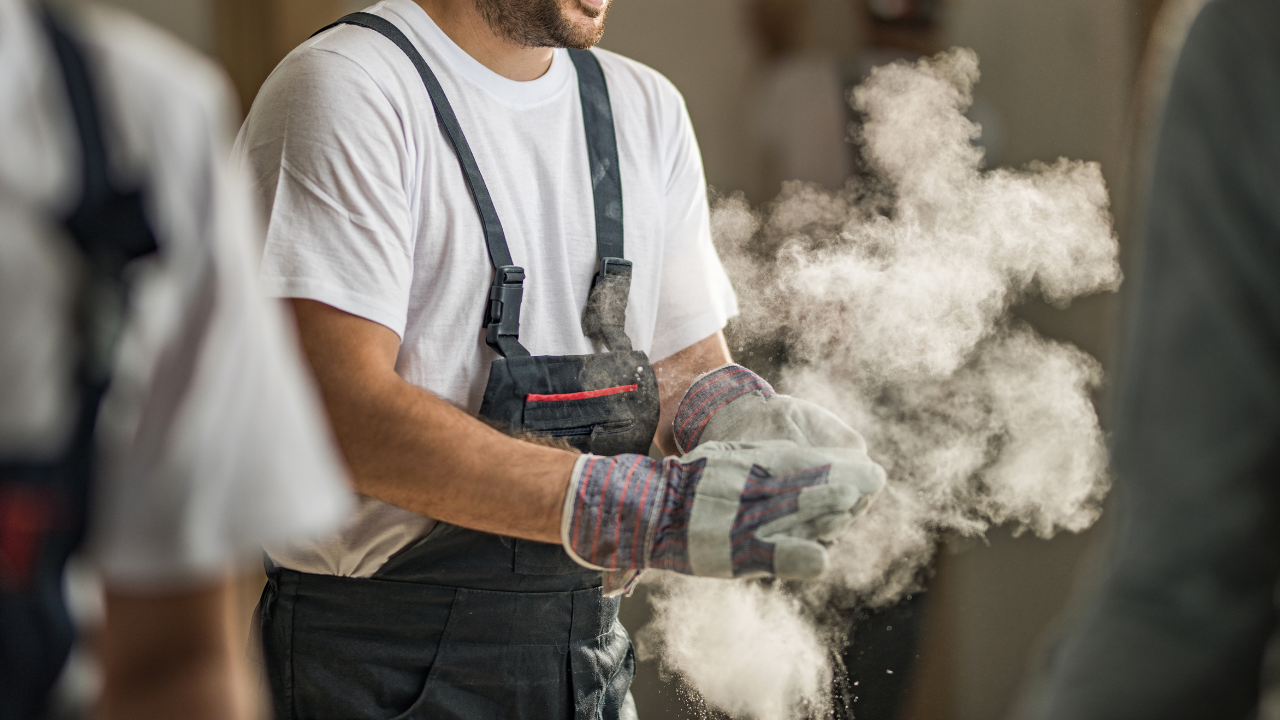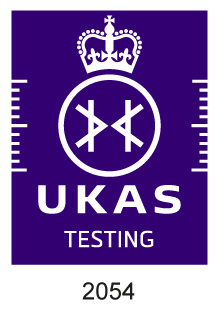Menu
close
**LATEST** New quantitative face fit services for RPE
Book in today
At the start of this year, we identified construction dusts – such as wood dusts, silica dusts and welding fumes – as one of the occupational health priorities for construction teams to be aware of in 2024.
It remains a significant hazard, precisely because so few people are aware of the true risk it poses to health – the effects of exposure to construction dusts take a far longer time to appear than other more immediate safety hazards.
That being said, while making your worksite safe is often very simple, the work cannot or should not start if you aren’t aware of the risks.
That is why we will explain what you need to know about construction dusts, and how you can protect yourself from them.
‘Construction dusts’ include a broad range of airborne, breathable substances that are generated on building sites. These can include dusts and fumes produced by:
In a similar way to airborne asbestos fibres, many of these dusts and fumes are barely visible to the naked eye – but they pose a significant health risk when inhaled, even in small amounts:
This is because breathing in these dusts, fumes or fibres – and not just RCS – over a long period of time poses the greatest risk to health.
This often takes the form of a chronic respiratory disease, such as lung cancer, COPD, asthma or silicosis, which may take decades to develop.
If construction dusts are so prevalent, and their effects so harmful, why are we continuing to underestimate the risks?
1. Construction dusts are a (mostly) invisible threat
As we have mentioned, breathable construction dusts are nearly impossible to see with the naked eye or sometimes present as a ‘dust cloud’.
In some cases, being aware of them on a busy construction site can be effectively impossible without the right equipment or testing methods.
Equally, immediate safety risks, such as mechanical, fire or electrical hazards can appear as a much more urgent priority than protecting workers from construction dusts.
This has been a significant finding of HSE’s own ‘Dust Kills‘ campaign, in which 1,000 inspections carried out in 2023 revealed significant on-site failings, such as RPE not being worn (or not being face-fit tested), no ‘on-tool’ extraction being used on high-powered cutting tools, and no damping down of dust to prevent airborne circulation.
However, this is only part of the issue…
2. A lack of understanding
Secondly, the results of those inspections also indicate to us that it isn’t necessarily a lack of will to follow COSHH guidelines – concerningly, some construction teams simply aren’t aware of them at all.
The summary report of the inspection campaign revealed that:
“Inspectors are still finding sites where the hierarchy of controls are simply not considered at all; where no effective design or planning has taken place to eliminate risks from dust, such as considering the use of pre-cut materials, and nothing being in place to minimise the risks by use of suitable control measures, such as water suppression and on-tool extraction and the use of RPE.”
It might not be a case that we are underestimating them – but that certain teams simply don’t know they are there: which is even more hazardous.
That being said, there is another potential, much broader reason why construction teams are misunderstanding the risks of construction dusts…
3. A culture of safety… but what about health?
Finally, as we have discussed previously, there is a risk that construction sites place the most emphasis on ‘safety’ and often neglect measures to protect ‘health’.
For example, a fall hazard, fire or electrical risk on a construction site that could cause serious injury or death may appear far more urgent in the moment than stopping exposure to barely visible fumes, dusts and particulates, which take years to develop into life-threatening conditions.
The proof is in the statistics:
Simply put, construction teams across the UK are adept at minimising safety risks. However, far greater attention needs to be placed on preventing chronic illnesses that develop over time – with construction dusts being a significant cause.
Being unaware of the risks of construction dusts is undoubtedly hazardous.
The consequences for a breach range from a simple improvement notice to a substantial fine – in the case of one construction firm, a £15,000 fine was given for multiple failings to control wood dusts.
That, of course, goes without mentioning the human cost.
However, the positive side is that once you are aware of the risks of construction dusts, controlling them is often very simple.
Broadly speaking, there are four steps to protecting your workforce:
You need to complete a COSHH assessment before you start work to remain compliant with COSHH and EH40 guidelines. This will ensure that you understand the full scope of risks your workers are exposed to on your site, and protect them with sufficient remedial measures.
COSHH assessments will ensure you can identify potential risks before they disrupt a project, provided that all hazardous substances are identified.
Further to this, those working in the heritage sector may be exposed to lead-based paints, for which a specific risk assessment will be required under the Control of Lead at Work Regulations, and testing of affected paints would need to be organised.
For example, avoiding unnecessary cutting, but also carrying out work in well-ventilated areas if possible.
Once you know your ‘at-risk’ areas, you can control those risks. Water dampening an area can lessen the effects of dust clouds, whilst on-tool extraction with ventilation systems can capture hazardous airborne dusts early.
Your appropriate respiratory protective equipment needs to be worn, and it needs to fit your face to be effective.
However, the first principle before starting any work is to be aware of the risk.
If you work with asbestos, you are familiar with the legal requirement to have asbestos awareness training before working on a site where asbestos may be present.
We believe that when even experienced construction teams can underestimate the risks posed by construction dusts – and that so many continue to fall ill or lose their lives to them – the same attention needs to be drawn to construction dusts as asbestos, or other prominent health risks.
This is why AEC run pioneering half-day online construction dusts awareness sessions that ensure builders of all experience levels gain awareness of the risks and understand how to protect themselves from them.
AEC can support any occupational hygiene activity that will make your worksite safer – from monitoring air quality and fitting face masks to carrying out vital COSHH risk assessments.
Awareness about construction dusts will save lives, and it’s easier than you think to get support. Simply call us at 0203 384 6175 or visit aec.uk to learn more.

